JONATHAN MORENA, DO.

Effects of intravenous immunoglobulin on myeloid cell function in Guillain-Barré syndrome
Project summary
Guillain-Barré syndrome (GBS) is an acute, post-infectious, immune-mediated illness that causes rapidly progressive ascending polyneuropathy and weakness. Early treatment with IVIg hastens recovery from GBS and may reduce long term disability. However, the mechanism of action of IVIg is poorly understood. Our overarching hypothesis is that IVIg dampens the destructive inflammatory response in GBS and accelerates clinical recovery through direct effects on myeloid cells. IVIg may result in a transition of myeloid cells to an anti-inflammatory state and suppress expression of conventional pro-inflammatory markers. We will collect CSF and blood, pre- and post-IVIg treatment from patients who present to The Ohio State University Wexner Medical Center (OSUWMC) within the first two weeks from symptom onset of an acute GBS event. Peripheral blood mononuclear cells and CSF cells will be analyzed by flow cytometry and single cell RNA-sequencing (scRNA-seq). Flow cytometric analysis will allow us to quantify the frequency of myeloid cells subsets and their expression of cell surface molecules and intracellular mediators on the protein level. scRNAseq will elucidate the transciptomes of CSF and blood myeloid cell subsets on a granular level. This study may increase our understanding of the mechanism of action of IVIg in GBS. If this project is successful, it may lead to similar studies in other neuro-immunological disorders, such as myasthenia gravis and chronic inflammatory demyelinating polyneuropathy, with the goals of elucidating immunopathological effectors and pathways, and defining the specific MOA of IVIg therapy in individual disease states. This project may expand the clinical utility of IVIg for other disorders with a similar underlying pathogenesis. It may also lead to the identification of biomarkers that are predictive of therapeutic responsiveness to IVIg, and/ or that correlate with clinical outcomes in GBS. Biomarkers that correlate with clinical outcomes could be employed in the future to optimize and increase the efficiency of GBS clinical trials, and to monitor patients in the clinical setting.
Biographical Sketch
Jonathan Morena is a PGY4 neurology resident at The Ohio State University in Columbus, OH. During residency, he has published on a variety of topics within the field of neurology. He has written a review on Charcot Marie Tooth (CMT), a large retrospective study on triple seronegative myasthenia gravis, a case series on Ehrlichia meningoencephalitis, and case reports on stroke and neuromuscular patients. He is also the co-academic chief for the residency. He will be going to Weill Cornell Medical Center/Hospital for Special Surgery for neuromuscular fellowship after residency. He is interested in pursuing further research studies within neuro-immunology and working in an academic center after fellowship.

